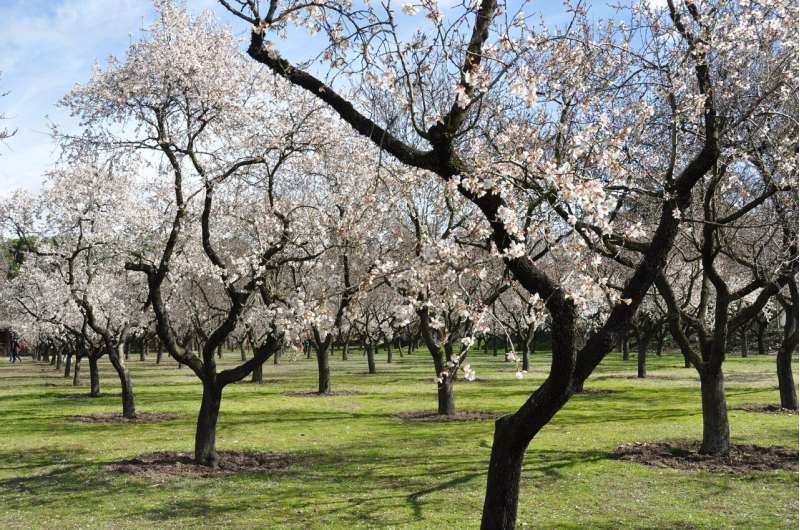This article has been reviewed according to Science X's editorial process and policies. Editors have highlighted the following attributes while ensuring the content's credibility:
fact-checked
peer-reviewed publication
trusted source
proofread
Phosphorus fertilization boosts young almond tree growth

Young almond orchards face numerous biotic stressors during their early growth stages, particularly when replanted in areas where old stone fruit orchards once stood. Among these challenges is the almond/stone fruit replant disease (ARD), which can significantly hinder growth and yields and is caused, in part, by a soil microbial complex.
A recent study of four orchard trials examined the impact of phosphorus (P) fertilization on newly replanted almond orchards. The trials, representing various replanting practices and scenarios, consistently showed that P fertilization significantly increased trunk cross-sectional area (TCSA) growth over a two-year period. This growth benefit was observed across different almond cultivars, replanting dates, and rootstock variations.
The paper is published in the journal HortTechnology.
Phosphorus (P) has been studied widely in agriculture because of its critical role as a plant macronutrient and positive effect on the yield of many crops. In plants, P is an integral component of nucleic acids and phospholipids, and it contributes essentially to many enzymatic reactions, including those involved in cellular energy transfer. There is increasing concern regarding the contribution of P to eutrophication (excessive richness of nutrients) of water bodies.
While phosphorus fertilization did not completely mitigate the effects of ARD, the data strongly indicate that it can improve the growth of young almond orchards in diverse replant settings. In all experiments, significant gains in TCSA resulted from P fertilization in at least one of the almond cultivars within the first two years after planting, supporting the hypothesis that P fertilization can benefit the growth of replanted almond orchards. This finding underscores the importance of considering phosphorus fertilization as a general best management practice for almond producers in California.
The study challenges previous recommendations that phosphorus fertilization is unnecessary for almond orchards, except in cases of demonstrated deficiency. By recommending a specific application rate of 2.2 ounces of phosphorus per tree at or near planting, the research provides practical guidance for growers seeking to optimize orchard growth.
The research also highlights the importance of other soil management practices, such as whole orchard recycling (WOR) and preplant soil fumigation, in conjunction with phosphorus fertilization. These practices, commonly used in California almond production, can influence the effectiveness of nutrient applications and overall orchard performance.
More information: Phoebe E. Gordon et al, Phosphorus Fertilization Can Improve Young Almond Tree Growth in Multiple Replant Settings, HortTechnology (2024). DOI: 10.21273/HORTTECH05143-22
Journal information: HortTechnology
Provided by American Society for Horticultural Science




















